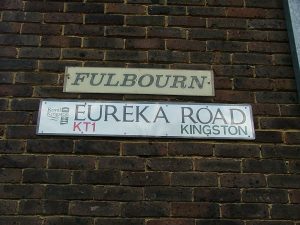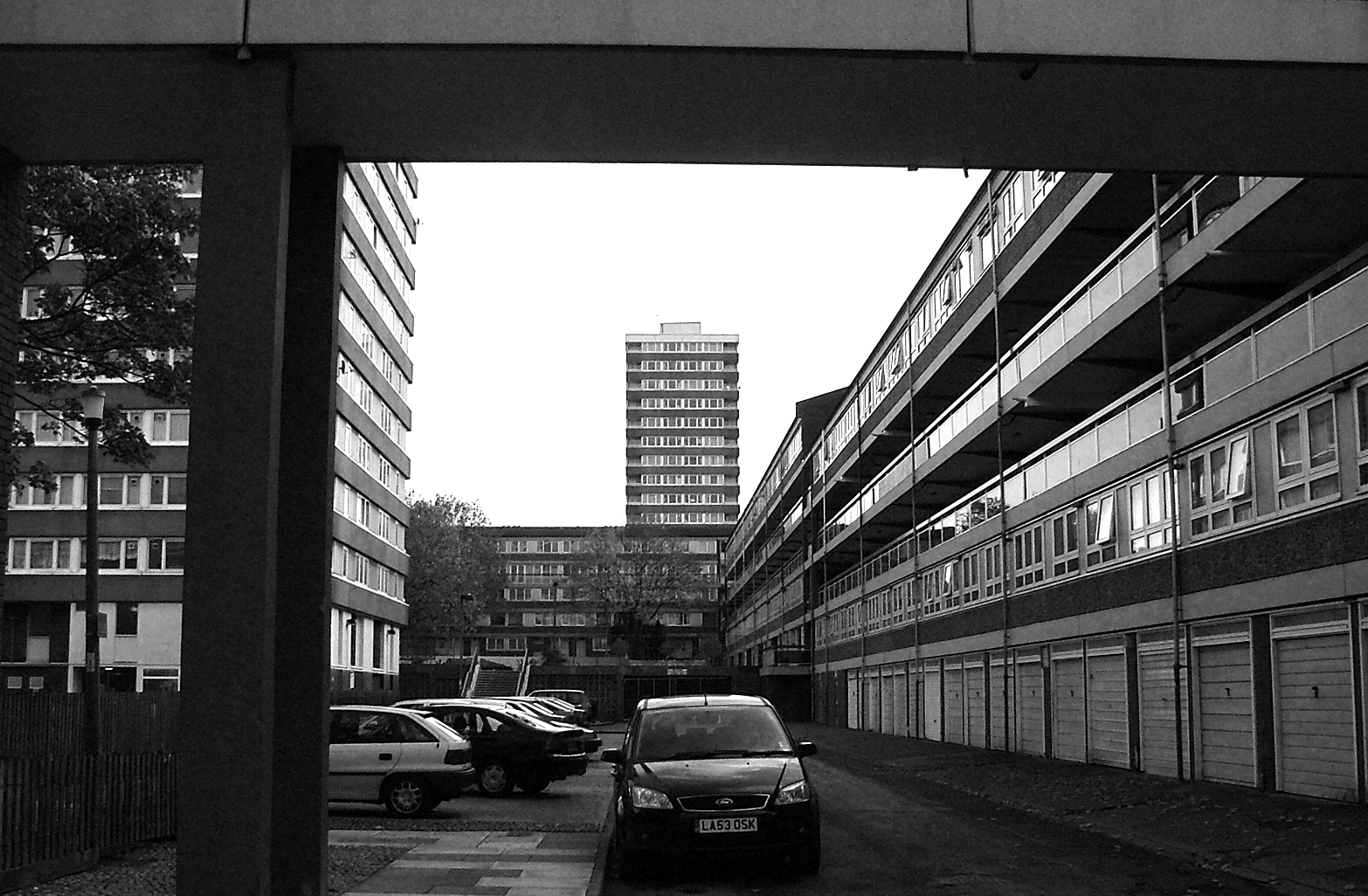
A Cambridge Estate street sign. Photo: Nico Hogg
Is Kingston Upon Thames preparing properly for the 21st Century? Or does unneeded modernisation threaten to blight a historic Royal Borough? Some locals feel as though there is an over-ambitious scheme proposed for just about every street corner in the old town.
The Kingston Residents’ Alliance has a blunt message for the council’s planning department: “You might say you are doing good for Kingston but instead you are destroying it. Look what visual and environmental damage has been done to Nine Elms and Vauxhall. Do you want the same end result for this borough?”
The £1bn-worth of improvements to the Cambridge Road Estate got the go-ahead earlier this year, as the Kingston Courier reported. Few would argue that the run-down and dilapidated brutalist relics of the 1960s and 1970s have retained any desirability they might once have possessed. But estate residents are alarmed at the proposal to more than double the number of dwellings – from around 800 to 2,000 – with no firm promise that a suitable amount of social housing will be available when work is completed, in an estimated 15 years.
Meanwhile, the centre of town appears to be on the verge of becoming a residential area again. In the 1860s, Eden Street was home to some 500 people, but as the town centre became more commercial this gradually declined. By the 1950s Eden Street’s poplation had fallen to fewer than 150 residents, and by 2001 there was no-one left at all who could call Eden Street home. Now the redevelopment of the Eden Walk shopping complex promises to bring a permanent community back to the heart of Kingston, with almost 400 new town-centre apartments and some new public spaces in the redesigned precinct.
To the south of Eden Street, new flatblocks will be going up along Brook Street. The side street, which currently serves as a shortcut for London buses heading to the town centre, is due for a major revamp. There was a fierce dispute over plans to replace the Old Post Office at the Brook Street-Eden Street junction, which ended in an apparent victory for townsfolk who wanted the structure preserved. Nevertheless, there will be a huge influx of new residents in the gleaming apartment buildings that will soon loom over the Post Office, which will be tucked away awkwardly in a ‘canyon’ between developments – if it ultimately survives.
Explore some Kingston redevelopment projects with our interactive map and its exhibits.
(This article continues below)

Ailsa Ferrelly, 82, has lived in Kingston’s Spring Grove area since the 1960s. She is cautiously optimistic about the proposed residential boom. “It’s a good thing on the whole,” she said. “There are too many students in Kingston. We all like the ‘buzz’ they give the area, and being young and sociable they can’t be doing the local shops and pubs any harm at all. But the thing is, they don’t pay Council Tax. They are exempt. It’s all very well for them, and good luck to them in the future, but they will move on and in the meantime Kingston is being asked to support more people than are contributing, and it will go on forever unless something changes pretty sharpish.”
This is the dilemma that many suspect has forced Kingston Council into a ‘clearance sale’ of redevelopment, hurriedly rubber-stamping any planning application that will increase the population of local taxpayers. The council is one of the worst-hit in England since the great crash of 2008-9. With one of the lowest central Government grants in Greater London, Kingston has to meet just under 80 per cent of its total expenditure from Council Tax revenues. Whitehall is leaving Kingston in the lurch. Has this led to a rushed approval of new housing for the sake of the council’s accounts?
Councillors are much given to talking about Kingston’s “housing crisis”, a phrase that perhaps gives a somewhat misleading impression. Although even one person living on the streets is a failure for such a prosperous area, Kingston’s population of 173,500 includes just over 450 homeless residents. The last time anyone checked, there were over 1,000 empty homes in Kingston. Little wonder that local groups such as the Residents’ Alliance feel the town is being damaged for short-term gains.
The Eden Walk redevelopment is an example that has some serious opposition. Historic England, a quango with a mission to preserve England’s built heritage, was damning in its opinion of the Eden Walk project when the plans were being debated. It told the council: “The proposals would cause harm to the historic environment that has not been sufficiently justified… To be acceptable very large developments should be in an appropriate location, of excellent design quality and should enhance the qualities of its immediate location and wider setting. Given its poor relationship to its historic context and the harm it causes to the significance of a number of listed buildings, we believe the proposals fail to meet these tests.”
But Historic England’s complaints have gone unheeded and the project is going ahead anyway.
Kingston Council’s assessment of its precarious financial situation is bleak: “We have made over £60 million of savings in the past few years – about 40 per cent of our total budget. We recognised some time ago that the combination of a reduction in funding and increased demand for services would present significant challenges. We are changing our approach in recognition of the fact that we would not otherwise achieve the budget reductions that we needed.
“We will continue to lobby the Government about grant funding, because we think that shifting the burden onto local taxpayers is unfair. Our lobbying did result in some transitional funding being awarded in 2016-17, but it was for two years only and was far from sufficient to plug the funding gap completely.”





